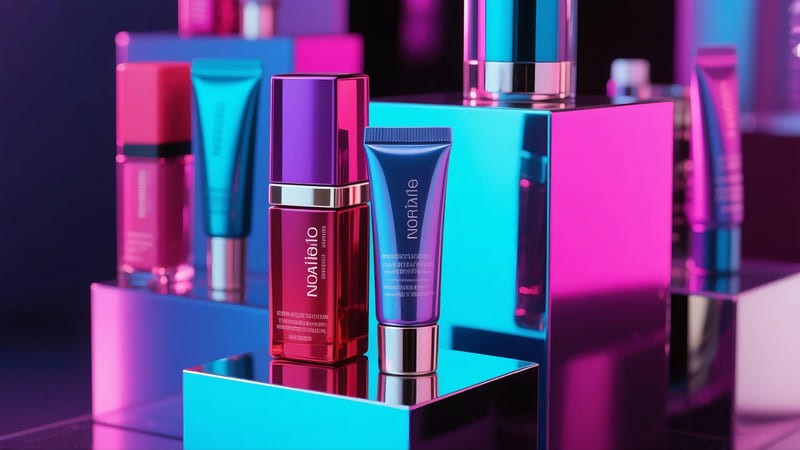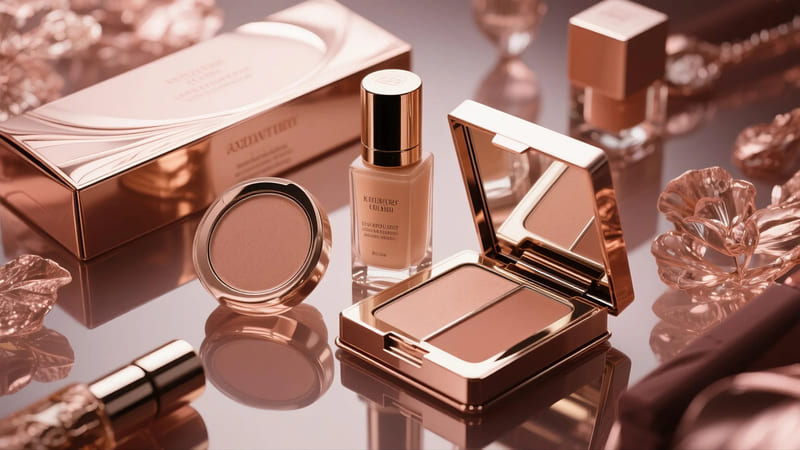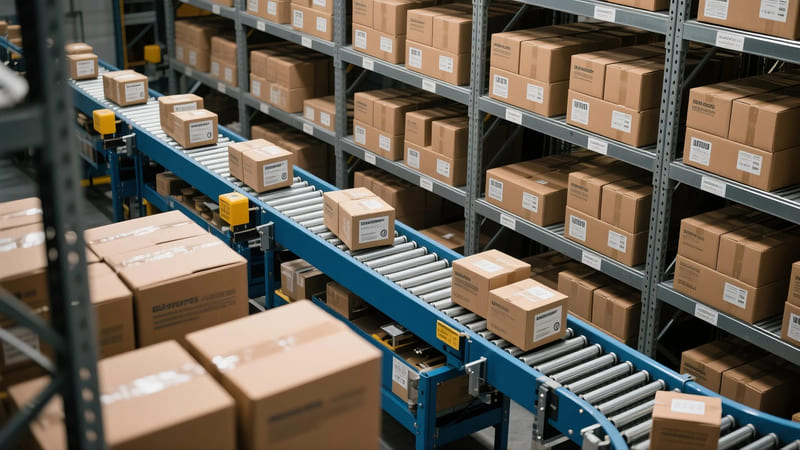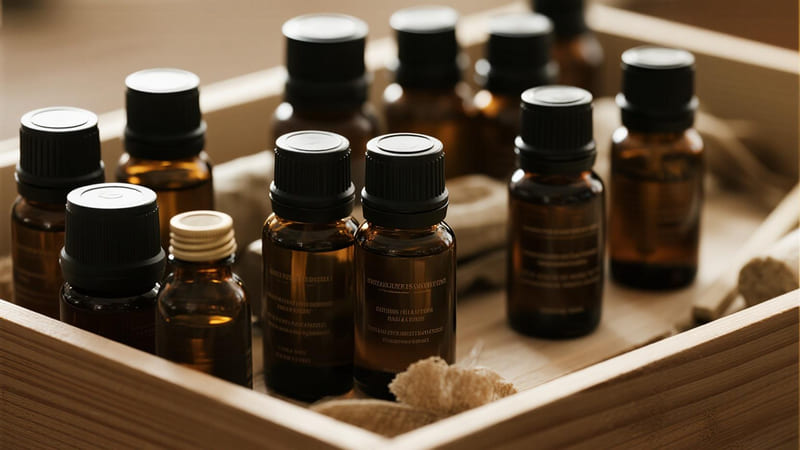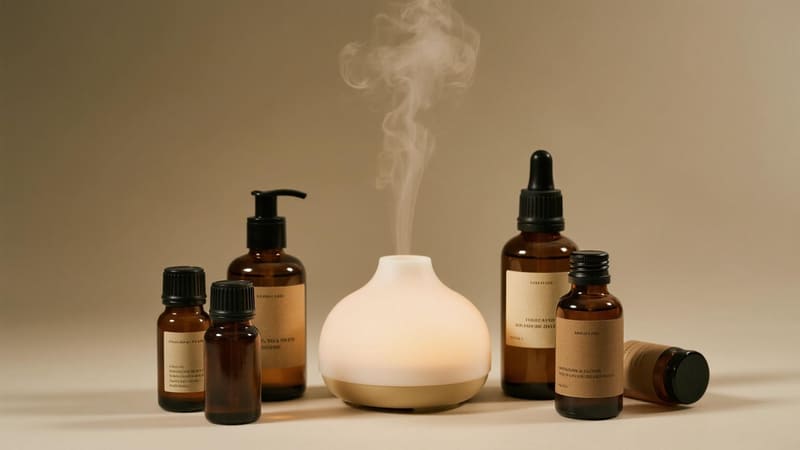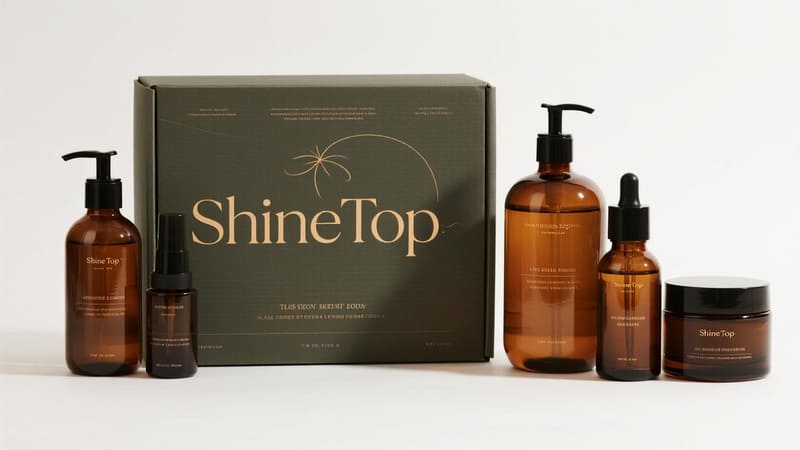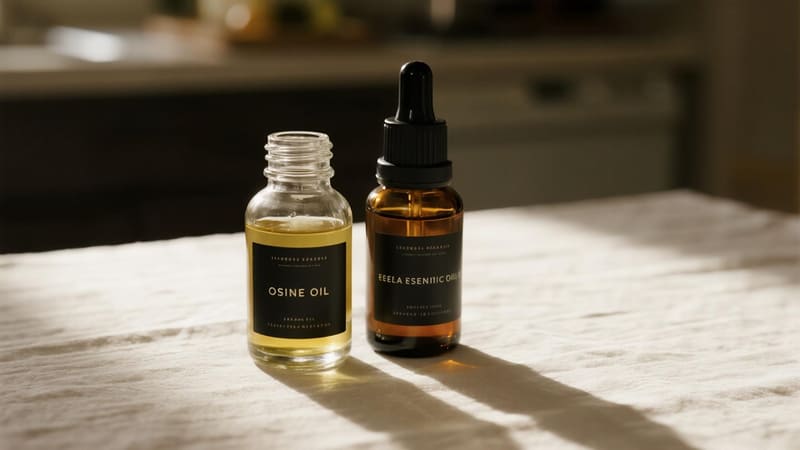Imagine your favorite high-quality serum housed in a flimsy, unappealing container. It just wouldn’t feel right, would it? The importance of cosmetic packaging extends far beyond merely holding the product.
Cosmetic packaging is vitally important as it protects the product, communicates brand identity and values, provides essential consumer information, influences purchasing decisions through aesthetic appeal, and enhances the overall user experience, acting as a silent salesperson and a key brand differentiator.
In the highly competitive and visually driven world of cosmetics, packaging is not an afterthought—it’s a cornerstone of brand strategy and product success. With over 20 years at ShineTop, a premier global packaging manufacturer, I’ve witnessed firsthand how impactful the right packaging can be. Let’s explore its critical importance.
Why is Packaging Important in the Cosmetic Industry?
The cosmetic industry thrives on image, aspiration, and sensory experience. Packaging is the first physical interaction a consumer has with a product, making its role exceptionally significant compared to many other industries.
Packaging is exceptionally important in the cosmetic industry because it’s a primary driver of consumer perception and choice. It safeguards delicate formulations, conveys brand narratives, ensures regulatory compliance, and creates a tactile, visual experience that can define a product’s desirability and perceived value.
The cosmetic industry relies heavily on packaging to achieve several crucial objectives that go beyond basic containment.
Unique Importance in Cosmetics:
-
Brand Storytelling & Identity Embodiment:
- Cosmetic packaging is a canvas for the brand’s story. Colors, materials, typography, and structural design all work together to communicate whether a brand is luxurious, natural, clinical, edgy, or minimalist.
- Think of the instant recognition of Chanel’s black and white or Tiffany’s iconic blue (though not cosmetics, the principle is the same).
-
Sensory & Emotional Appeal:
- The weight of a glass jar, the smooth click of a lipstick case, the soft-touch finish of a box – these tactile elements contribute to the perceived quality and luxury.
- Beautiful design evokes positive emotions and can create a sense of desire and aspiration.
-
Protection of Sensitive Formulations:
- Many cosmetic ingredients (vitamins, antioxidants, natural extracts) are sensitive to light, air, or contamination. Packaging like airless pumps, opaque materials, or UV-protective glass is vital for preserving efficacy.
-
Conveying Product Efficacy & Benefits:
- Sophisticated packaging can imply a sophisticated, effective formula. For example, "clinical-looking" packaging might suggest scientific backing.
-
Justifying Premium Pricing:
- In the luxury segment, exquisite packaging is often a significant part of what consumers are paying for. It contributes to the overall value proposition.
- Mohammed, my client from Iraq, understands this well. He invests in high-end custom packaging for his gift sets because it allows his customers to command a premium price and reinforces the quality of the products within.
-
Facilitating Application & Use:
- Integrated applicators (mascara wands, doe-foot lip gloss applicators, droppers) are part of the packaging and crucial for product performance.
The visual and tactile nature of cosmetics means that packaging is intrinsically linked to the product’s core appeal and function.
What is the 5 Importance of Packaging?
While packaging has many roles, its importance can often be distilled into a few core functions that are universally critical across most product categories, including cosmetics.
The five key importances of packaging are: 1. Protection (safeguarding the product), 2. Containment (holding the product), 3. Information (providing details), 4. Utility/Convenience (ease of use), and 5. Promotion/Attraction (marketing and sales).
These five pillars highlight the fundamental value that packaging brings to any product.
The Core Five Functions Explained:
-
Protection:
- Physical Protection: Shielding the product from damage during shipping, handling, and storage (e.g., breakage, crushing, leakage).
- Barrier Protection: Protecting the product from environmental factors like moisture, oxygen, light, dust, and microorganisms that could degrade it.
- Tamper Evidence: Some packaging provides security against tampering.
-
Containment:
- This is the most basic function: to hold the product together in a defined quantity, making it easy to transport, store, and handle.
- Essential for liquids, powders, gels, and creams.
-
Information (Communication):
- Conveying essential details to the consumer, such as:
- Product identification (name, brand)
- Ingredients list
- Net weight or volume
- Usage instructions
- Warnings and safety precautions
- Manufacturer/distributor details
- Batch codes and expiration dates
- Barcodes for retail scanning
- Conveying essential details to the consumer, such as:
-
Utility / Convenience / Functionality:
- Making the product easy to use, open, close, dispense, and store.
- Features like easy-open tabs, resealable closures, ergonomic shapes, and appropriate dispensing mechanisms (pumps, sprays, droppers) fall under this.
- Portion control can also be a convenience factor.
-
Promotion / Attraction (Marketing):
- Acting as a "silent salesperson" to attract consumer attention on the shelf or online.
- Communicating brand identity, values, and product benefits through design, color, graphics, and shape.
- Differentiating the product from competitors and influencing purchasing decisions.
- Creating a desirable unboxing experience.
In cosmetics, while all five are crucial, the "Promotion/Attraction" aspect often receives heightened emphasis due to the industry’s aesthetic focus. However, without the foundational roles of protection and information, even the most beautiful packaging would fail.
Why Beautiful Packaging is Important?
In a world saturated with choices, aesthetics matter immensely. Beautiful packaging isn’t just a superficial luxury; it’s a powerful psychological tool that can significantly impact consumer behavior and brand success.
Beautiful packaging is important because it captures attention, creates a positive first impression, evokes emotion, enhances perceived product value and quality, builds brand desire, and contributes to a memorable user experience, often leading to increased sales and customer loyalty.
Beauty in packaging has a tangible impact on how consumers perceive and interact with a product, especially in the realm of cosmetics.
The Power of Aesthetic Appeal:
- Grabs Attention: In a visually cluttered environment (like a retail store or an online shop), beautiful packaging stands out and makes consumers pause and look closer.
- Creates Positive First Impressions: Humans are visual creatures. An attractive package immediately suggests that the product inside is also of high quality and desirable.
- Evokes Emotion & Desire: Beauty can trigger positive emotions – joy, excitement, a sense of luxury, or aspiration. This emotional connection can be a strong purchase driver.
- Enhances Perceived Value: Consumers are often willing to pay more for a product if it comes in beautiful packaging. The packaging itself becomes part of the value proposition. Think of luxury perfumes where the bottle is as coveted as the scent.
- Builds Brand Image & Recognition: Consistent use of beautiful, distinctive packaging helps build a strong brand identity and makes the brand more memorable.
- Improves User Experience: Using a beautifully packaged product can feel like a treat or an indulgence, enhancing the overall ritual of use.
- Encourages Gifting: Beautifully packaged items are more likely to be chosen as gifts, expanding the product’s reach.
- Social Media Shareability: "Instagrammable" packaging can generate organic marketing as users share their unboxing experiences and product "shelfies."
Anna, a cosmetics manufacturer in Thailand, understands this well. Even for her natural, eco-conscious brand, she ensures the packaging design is clean, elegant, and aesthetically pleasing. She knows that beauty in simplicity can be just as powerful as ornate luxury, and it resonates with her target customers who appreciate understated quality.
Why is Packaging Necessary on Products?
Beyond the aesthetic and marketing aspects, packaging fulfills fundamental needs that make modern commerce and product consumption possible. Without it, many products simply couldn’t exist or reach the consumer safely.
Packaging is necessary on products primarily for containment, protection (from damage, spoilage, and contamination), identification, information dissemination (usage, ingredients, safety), and to facilitate handling, transportation, and storage throughout the supply chain and in the consumer’s home.
The necessity of packaging stems from very practical and essential requirements for bringing products to market and ensuring they are usable and safe.
Fundamental Necessities Fulfilled by Packaging:
-
Containment:
- Many products are liquid, powdered, granular, or composed of multiple small parts. Packaging holds them together in a manageable unit. Without it, selling or transporting items like lotions, powders, or even pills would be impossible.
-
Protection & Preservation:
- Physical Shield: Protects against breakage, crushing, vibration, and other physical shocks during transit and handling.
- Barrier from Environment: Prevents spoilage or degradation from oxygen, moisture, light, bacteria, and pests. This is crucial for food, pharmaceuticals, and cosmetics to maintain safety and efficacy.
- Extends Shelf Life: By protecting the product, packaging helps it last longer, reducing waste.
-
Identification & Information:
- Allows consumers and retailers to identify what the product is, who made it, and what it’s for.
- Provides legally required information (ingredients, nutritional facts, warnings, expiration dates) crucial for consumer safety and informed choice.
-
Facilitation of Handling & Logistics:
- Standardized packaging shapes and sizes make products easier to stack, store, transport, and display in retail environments.
- Barcodes on packaging enable efficient inventory management and checkout processes.
-
Safety & Hygiene:
- Protects products from contamination before they reach the consumer.
- Tamper-evident features provide assurance that the product has not been opened or interfered with.
- Child-resistant packaging prevents accidental ingestion of harmful substances by children.
-
Portion Control & Convenience:
- Single-serving packages or packaging designed for easy dispensing adds convenience for the consumer.
Imagine a world without packaging: milk couldn’t be transported easily, medicines would be contaminated, and delicate electronics would break before reaching your home. For cosmetics, especially those with active or sensitive ingredients, robust and appropriate packaging is not just nice to have; it’s essential for the product to even be viable. At ShineTop, our entire infrastructure, from our 100,000㎡ factories to our advanced surface treatment facilities, is dedicated to creating packaging that fulfills these necessary roles with excellence.
Conclusion
The importance of cosmetic packaging cannot be overstated. It is a multifaceted discipline that safeguards the product, communicates vital information, embodies the brand’s essence, captivates consumers with its beauty, and ensures a delightful user experience. From basic necessity to a powerful marketing tool, packaging is integral to the success of any cosmetic product.

